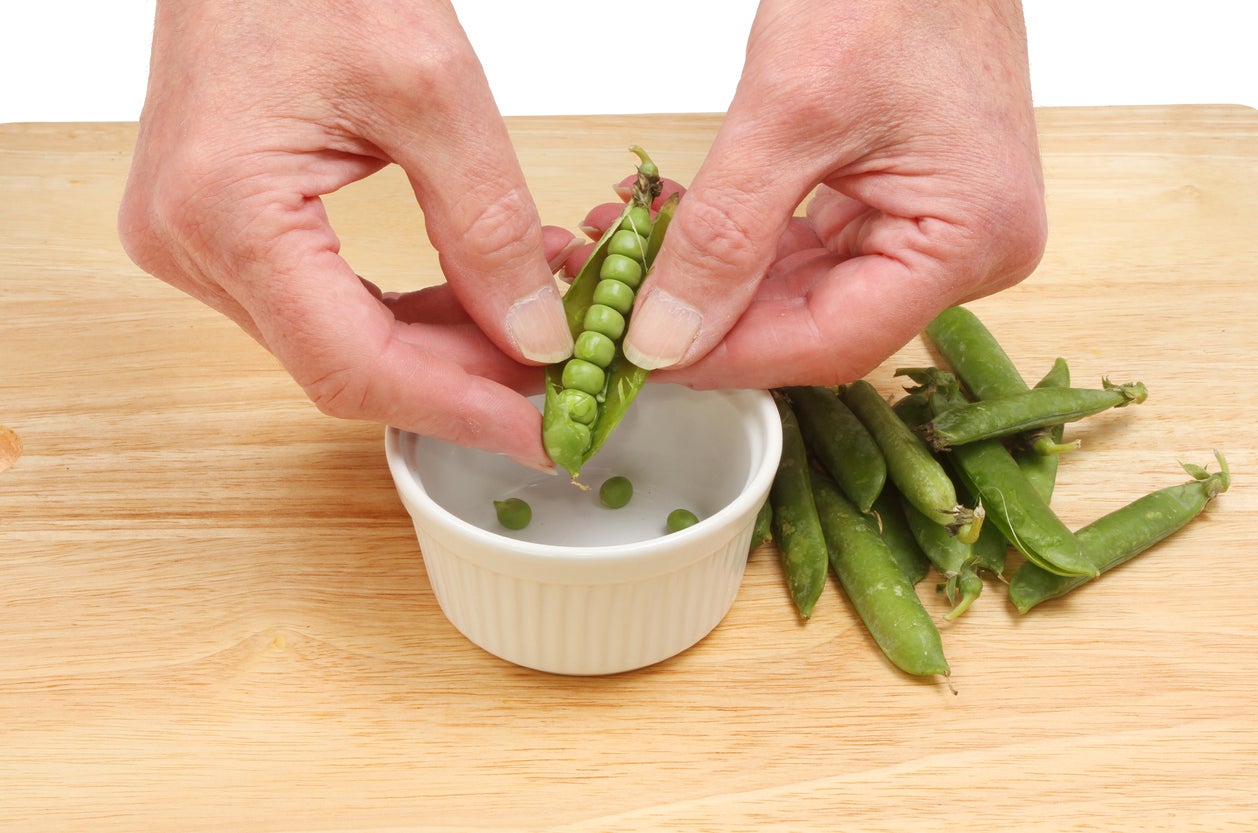Green Arrow Pea Care – What Is A Green Arrow Shelling Pea


There are many varieties of pea out there. From snow to shelling to sweet, there are a lot of names that can get a little confusing and overwhelming. If you want to know that you’re choosing the right garden pea for you, it’s worth your while to do a little reading ahead of time. This article will tell you everything you need to know about the pea “Green Arrow” variety, including tips for Green Arrow pea care and harvest.
Green Arrow Pea Info
What is a Green Arrow pea? Green Arrow is a shelling pea variety, which means its pods should be allowed to grow to maturity before being harvested, then the shells should be removed and only the peas inside eaten.
At their biggest, these pods grow to about 5 inches (13 cm.) in length, with 10 to 11 peas inside. The Green Arrow pea plant grows in a vining habit but is small as peas go, usually reaching only 24 to 28 inches (61-71 cm.) in height.
It is resistant to both fusarium wilt and powdery mildew. Its pods usually grow in pairs and reach maturity in 68 to 70 days. The pods are easy to harvest and shell, and the peas inside are bright green, tasty, and excellent for eating fresh, canning, and freezing.
How to Grow a Green Arrow Shelling Pea Plant
Green Arrow pea care is very easy and similar to that of other pea varieties. Like all vining pea plants, it should be given a trellis, fence, or some other support to climb up as it grows.
Seeds can be planted directly in the ground in the cool season, either well before the last frost of spring or late in the summer for a fall crop. In climates with mild winters, it can be planted in the fall and grown straight through winter.
Sign up for the Gardening Know How newsletter today and receive a free copy of our e-book "How to Grow Delicious Tomatoes".

The only child of a horticulturist and an English teacher, Liz Baessler was destined to become a gardening editor. She has been with Gardening Know how since 2015, and a Senior Editor since 2020. She holds a BA in English from Brandeis University and an MA in English from the University of Geneva, Switzerland. After years of gardening in containers and community garden plots, she finally has a backyard of her own, which she is systematically filling with vegetables and flowers.